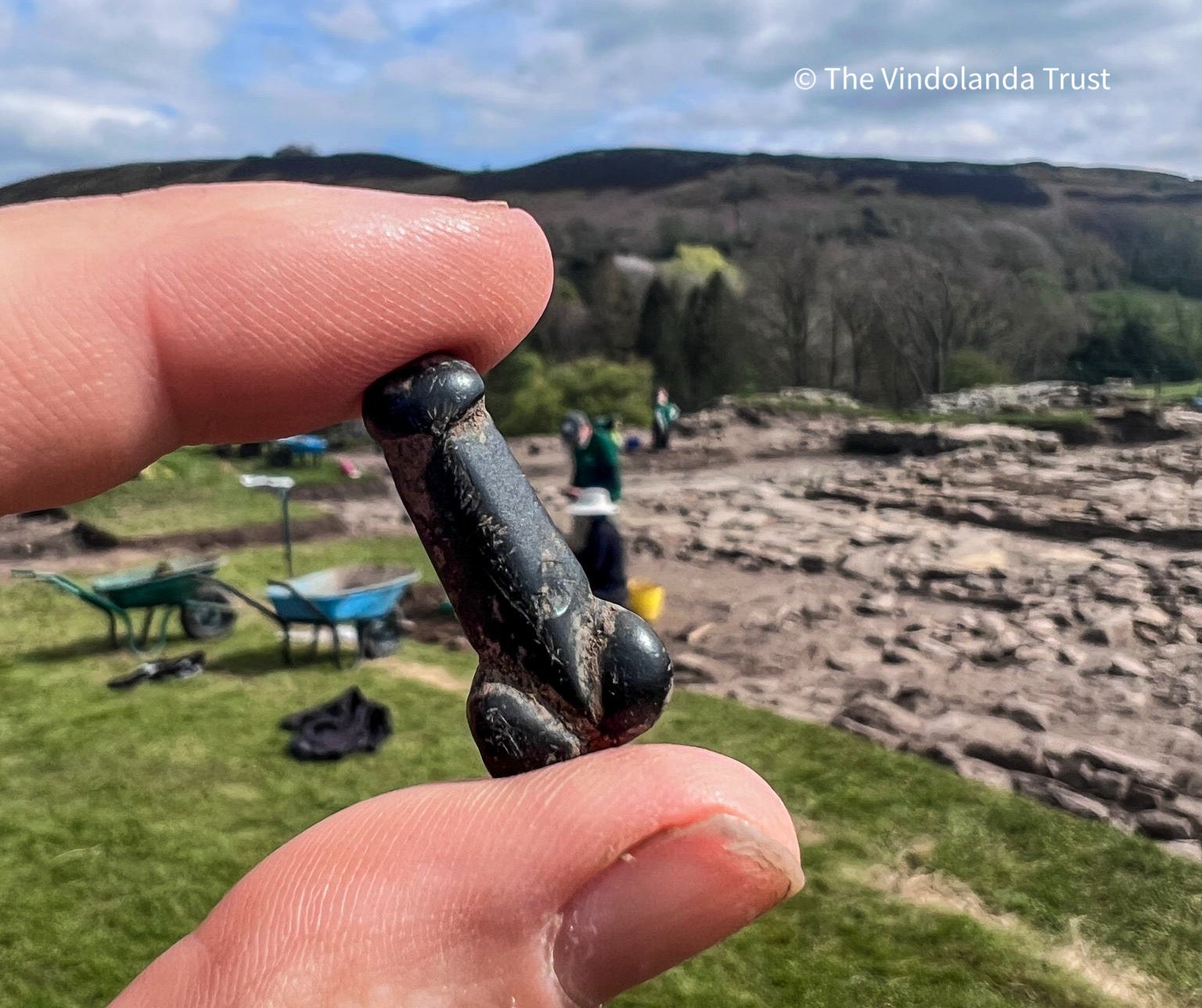ARTICLE AD BOX
Archeologists at a Roman fort near Hadrian’s Wall have uncovered a penis-shaped pendant thought to have been used as good luck charm.
Recent excavations at Vindolanda, a fort just south of the Sycamore Gap, have unearthed a quirky piece of jewellery within the remains of a 4th Century wall.
The site was under Roman occupation between 85 AD and 370 AD, and today is an active archaeology site with it providing an insight into the lives of people living and working near Hadrian's Wall nearly 2,000 years ago.
Among the latest finds from the team of archaeologists is a miniature phallus-shaped pendant made from Jet gemstone, with its smooth surface suggesting the wearer touched it often for good luck.

“This little jet pendant was lost at sometime in the early 4th century when the barrack wall in which it was found was constructed,” director of excavations at the Vindolanda Charitable Trust, Dr Andrew Birley, said.
“Jet is increasingly common as a material used for jewellery from the early third century onwards and small good luck charms or pendants like these would have been worn by many of the soldiers at places like Vindolanda.
“You can see that the pendant is quite smooth, not just because of the material used but also no doubt because the wearer touched the charm for good luck.

“We are delighted to find this wonderful little artefact and I have no doubt that this is just the start of many more discoveries to come from Vindolanda this year.”
Phallic imagery was commonly used in as a symbol of good luck in Roman art.
Soldiers would often wear fist-and-phallus amulets for luck in battle and parents would kit their children out with penis-shaped pendants to protect them from the evil eye.
The symbols have been found on a wide range of Roman objects by archaeologists and historians, from mosaics to lamps. Along Hadrian’s Wall alone, 59 phallic representations have been identified on the wall and in associated forts.

The discovery at Vindolanda follows a 2024 find where a phallus symbol was found carved into a stone slab, and follows the team’s discovery of several other artefacts such as ink tablets, boxing gloves, boots and shoes at the important site.
Vindolanda was first built by the Roman army before construction had even begun on the 73-mile-long Hadrian’s Wall to guard the wild north-west frontier of the Roman Empire.
It became an important construction and garrison base for the wall and was demolished and rebuilt at least nine times.









 English (US) ·
English (US) ·